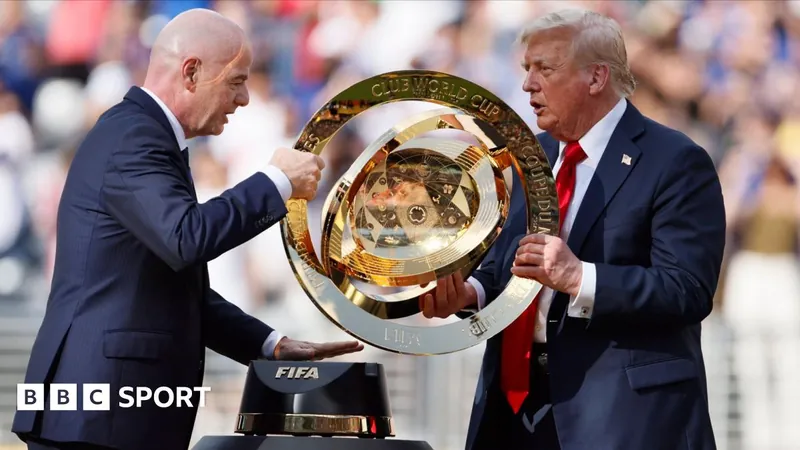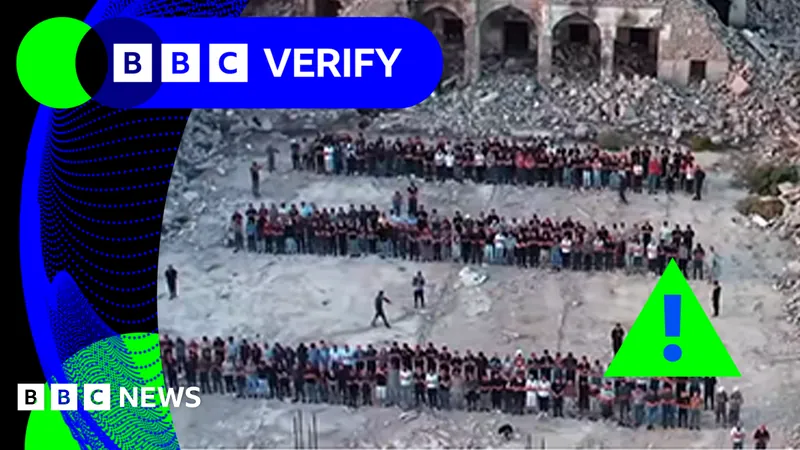
Lessons from the Club World Cup: A Glimpse into the 2026 World Cup
2025-07-14
Author: Ying
The Club World Cup has served as a preliminary glance at what fans can expect from the highly anticipated 2026 World Cup, featuring 48 teams across Mexico, Canada, and the United States. With venues like Mercedes-Benz Stadium and Hard Rock Stadium also set to host World Cup matches, vital insights have emerged.
So, what key takeaways have we gained from this tournament? And what can FIFA do to improve before the grand event?
Weather Woes: A Harbinger for the 2026 World Cup?
Former Premier League star Michael Brown emphasized the Club World Cup's role as a valuable test run for next summer's World Cup. However, record-breaking heat and turbulent storms posed problems, leading to delays in multiple games due to safety concerns.
In the U.S., rules stipulate that games must be halted when lightning strikes within ten miles, causing six matches to delay for durations ranging from 40 minutes to two hours. Chelsea's match against Benfica was particularly chaotic, with the game delayed so drastically that it brought dramatic twists to the scoreline.
Extreme Temperatures Challenge Teams and Fans
Heat was a recurring theme throughout the tournament, with temperatures soaring to a sweltering 39°C. Clubs had to adapt by shortening training sessions, while players like those from Juventus struggled, with reports of ten players asking to be substituted due to heat exhaustion.
Even the infrastructure felt the heat: at Lincoln Financial Field, sniffer dogs donned Crocs to protect their paws from the hot concrete.
Attention to Attendance: A Mixed Bag
Attendance varied widely, from thrilling sell-outs to disappointing turnouts, with some matches attracting fewer than 10,000 fans. This inconsistency raises questions about how to better market future events in the U.S., especially as fans gear up for the imminent 2026 World Cup.
Kick-off Times and Dynamic Pricing Dilemmas
FIFA's decision to maintain similar kick-off times during next year's World Cup could backfire. Many matches were scheduled during inconvenient hours, discouraging attendance. Additionally, dynamic ticket pricing has sparked controversy, with drastic last-minute price reductions leaving early buyers feeling short-changed.
Logistics and Transport Challenges Ahead
Transport logistics also need serious consideration for the 2026 World Cup. The massive size of the U.S. means that reaching stadiums can be tricky, with some venues lacking adequate public transit options. Fans faced grueling walks to reach entry points, highlighting the need for improved transport solutions.
Security and Preparation: A Need for Improvement
With heightened security evident throughout the Club World Cup, particularly at the final attended by Donald Trump, questions arise about how to manage safety during the 2026 World Cup. Comprehensive security measures will surely be necessary but must also be balanced with a welcoming environment for fans.
As we look towards the 2026 World Cup, the lessons learned from the Club World Cup lay the groundwork for a smoother, more enjoyable experience for teams and fans alike. With careful planning and attention to these challenges, the upcoming tournament could be a monumental success.




 Brasil (PT)
Brasil (PT)
 Canada (EN)
Canada (EN)
 Chile (ES)
Chile (ES)
 Česko (CS)
Česko (CS)
 대한민국 (KO)
대한민국 (KO)
 España (ES)
España (ES)
 France (FR)
France (FR)
 Hong Kong (EN)
Hong Kong (EN)
 Italia (IT)
Italia (IT)
 日本 (JA)
日本 (JA)
 Magyarország (HU)
Magyarország (HU)
 Norge (NO)
Norge (NO)
 Polska (PL)
Polska (PL)
 Schweiz (DE)
Schweiz (DE)
 Singapore (EN)
Singapore (EN)
 Sverige (SV)
Sverige (SV)
 Suomi (FI)
Suomi (FI)
 Türkiye (TR)
Türkiye (TR)
 الإمارات العربية المتحدة (AR)
الإمارات العربية المتحدة (AR)